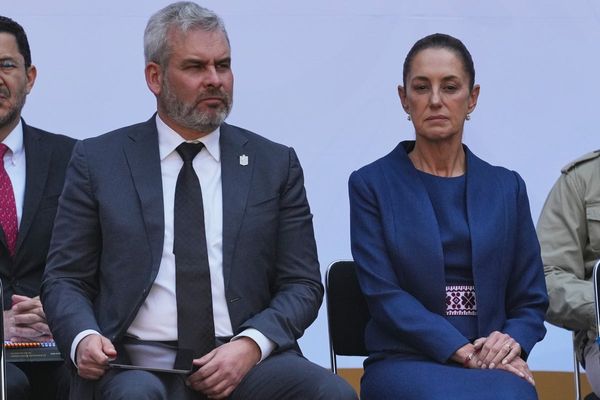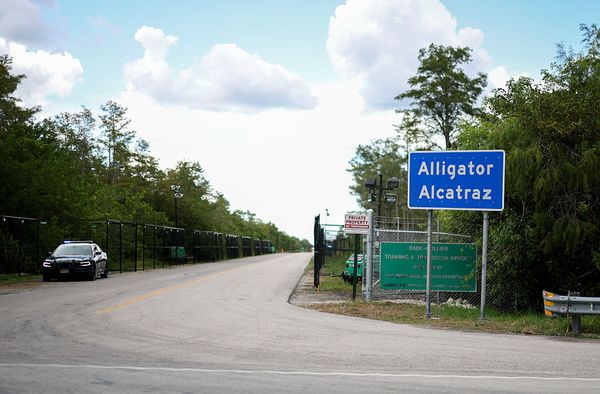
Federal funding comprises just a fraction of the modest budget of the tiny Pacific Elementary School District. The Santa Cruz County district has one school. Its superintendent, Eric Gross, also serves as the school’s principal and its preschool director.
“That’s what happens in a small rural school,” Gross told me recently in a call from his office at Pacific Elementary, total enrollment 183. The school, tucked just east of Highway 1 on a plateau above the Pacific Ocean, is described on its website as a leader in “experiential learning,” and Gross said that many of its students are transfers from nearby districts.
The district’s federal funding – about $135,000 annually – has for several years included a grant from the U.S. Department of Agriculture that enables the district to buy food from local growers as part of its school nutrition program. It isn’t much, about $6,000 total, but the money goes directly to purchase produce from four area family farms.
In early March, the USDA canceled the grant as part of $1 billion in national school-food budget cuts, saying in part that the program “no longer effectuate[s] the goals of the agency.”
“Two of those local [farms] from whom we buy have kids that attend our school,” Gross said. “As we’re talking, I’m looking out my window at the playground, and I see one of those kids. I know that we’re going to give his parents less money, and that’s going to affect him and his parents.
“As a district, we’ll figure out how to absorb that cut. But this is local — it’s a small place,” Gross added. “So this affects our neighbors, and if the farmers have less income, then the farms struggle, and their distributors struggle. These cuts have immediate effects.”
Far removed from the riotous national conversation revolving around the Trump administration’s attempt to dismantle whole sections of the federal government, life goes on in school districts like Pacific Elementary — still churning, though not untouched.
The district isn’t exactly isolated. Located in the unincorporated community of Davenport, it’s only about 10 miles north of Santa Cruz, with its 61,000 residents and University of California campus. Pacific Elementary’s families, Gross said, include farmers and farmworkers, but also professors, forest rangers, scientists, fast-food workers — “a mix of people.”
Trump administration budget cuts hit here in the same way as elsewhere, albeit on a miniature scale. But the effects are real enough, and Gross is among the educator first responders, if you will — the people whose immediate instinct is to reassure kids that things at school will be all right.
I reached out to Gross, who has taught or led schools in Santa Cruz County for 30 years, after he used the word “chaos” to describe what he was feeling as superintendent in a Lookout Santa Cruz story examining the effect of Trump budget cuts on the county’s school districts. Pacific Elementary is one of five districts that collectively would have received $213,000 from the USDA’s Local Food for Schools Cooperative Agreement Program this year, the Lookout reported.
Again – for Gross’s district, the hit is only $6,000. It is manageable in the sense that it doesn’t derail the entire budget. But it forces the district to decide to either buy less food or cheaper food for school nutrition.
That is the opposite of the intention of that USDA program, which was launched in 2022 by the Biden administration to strengthen the local food chain and make schools slightly less dependent on major companies for their food purchases. The USDA’s own explanation of the program, though, also mentions an emphasis “on purchasing from historically underserved producers and processors,” which may suggest why the Trump administration went after it.
The program’s demise is a small part of Trump’s assault on the education system in general and his dismantling of the Department of Education. Coupled with the threat of federal immigration (ICE) officers showing up on school campuses, Gross said, schoolkids everywhere — including at Pacific Elementary — have been thrown into the world of chaos that he described.
A few hundred miles across the state, administrators at the comparatively massive Visalia Unified School District decided to try to get ahead of that. The 32,000-student district serves dozens of schools across 36 square miles of Tulare County, an agricultural powerhouse whose population counts thousands of immigrant workers.
“Families don’t really know me, but they know their teacher, their counselor, their social worker or principal,” said Visalia superintendent Kirk Shrum. “So for us, it was really more about equipping our school sites and the people there with resources, tools and support.”
Particularly on the subject of immigration status, Shrum said, workers at the school sites consistently communicated the same message to families: The district by law does not collect such information and thus has nothing to share with officers; no one can roll onto a campus without first being signed in and vetted; the kids are safe at school.
A few families reached out to their schools’ principals for further reassurance, Shrum said, but none kept their children out of school for more than a day. There have been no ICE sightings, and the Visalia district’s average daily attendance is tracking at or above last school year’s levels.
“I work with our counselors, social workers and families to say that the safest place for you to be is at school,” Shrum said. “We have processes in place, and many of those processes have been in place at most schools for a long time — since Sandy Hook, honestly. We can’t say that nothing bad will ever happen, but we can assure our families that our staff is trained and knows what to do in case of an emergency or other situation.”
Visalia’s budget is also strong enough to withstand a cut. When the Trump administration recently canceled a federally funded teacher recruitment program, Visalia was “about halfway through an $8 million grant, so that impacted us to the tune of about $4 million, but we were able to absorb that impact for this year,” Shrum said. (A federal judge later blocked the cut, which eight states, including California, had sued to reinstate. The case remains in the courts.)
As for what comes next, neither Eric Gross nor Kirk Shrum is forecasting. Shrum noted that major policy shifts — say, attempts to either force or prohibit certain topics being taught — generally are drawn-out processes that often involve court challenges. They loom more on the far horizon than just outside the window.
For Gross, school goes on at Pacific Elementary. With a budget that feels every pinch, the district has to be nimble when it comes to allocating resources — but the superintendent said that, in some cases, taking a hit in federal funding could be worth it if the alternative were to stop a teaching program that works.
“Of course, because there’s so much chaos, we’re not sure what the policy changes are or what they might be,” Gross quickly added. For school districts in the Trump II era, that feels like the ultimate truth.







